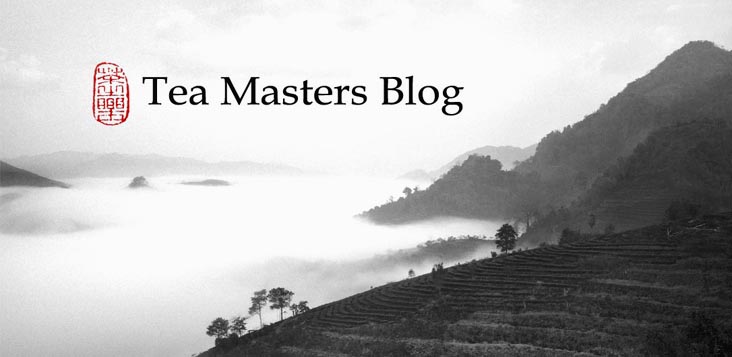In Taiwan, starting in the 1980s, the Cha Yi (tea art) movement has combined classic Qing dynasty Chaozhou gongfu cha with the elegance of Japanese (green) tea ceremonies (which have Chinese origins). Traditional gongfu cha was all about making the perfect cup of (roasted) Oolong while the Japanese ceremonies were pursuing more aesthetic and principled goals that are mostly remotely connected to tea . My understanding of this Taiwanese movement (according to my now 15 years of studies with Teaparker) is that making a Chaxi (a beautiful set up) is not about adding an additional layer of complexity to an already very complex product and process. The beauty we are trying to create should not be disconnected from the tea. It should go to the heart of the aromas we are trying to brew. It builds on the knowledge of the leaves, the knowledge of the brewing process and all this is integrated in the Chaxi with a touch of personal creativity and beauty. It is more about finding and restoring harmony between the leaves and the accessories than simply creating beauty per se.
In the above Chaxi, for instance, I brewed my 1980s Jingua Gongcha, a shu puerh from the Menghai Tea Factory. Gongcha means tea tribute, leaves that are offered to a higher authority. In the 1980s, this meant a higher quality grade of leaves than most cooked puerhs. Thanks to several decades of aging, this shu puerh has developed camphor and incense like fragrances that are similar to very old sheng puerh, but the taste is sweeter and smoother. The character of the tea is dark and has many layers. This is reflected in the dark quilt like Chabu I'm using. An Yixing jar is a fine storage accessory for shu puerh. Using a porcelain gaiwan helps me to have a very precise opinion about this tea's outstanding quality. (The gaiwan is from the same 80s era as the tea.) I find there are indeed many similarities in terms of scents with a real aged Tongqing Hao! The color of the brew becomes lighter after each brew. Ivory porcelain cups bring this color to shine brightly. And the copper chatuo shines like gold, just like this aged shu puerh could have passed as an even older sheng. (The reason we use copper instead of gold is the same: it's more affordable and looks pretty close!)
I hope that this example clarifies what a Chaxi is all about. Everything is linked and the result will always depend on the strength of the weakest link. A bad tea, an accessory that doesn't fit the leaves, bad water, a messy setup... anything could mess up the beauty of taste, scent and sight of your Chaxi. And I haven't mentioned the brewing skills that require time and practice to pour well without making stains!
This is what I am aiming to achieve for myself. It's also what I'm trying to share, teach and inspire with this blog, my online tea boutique with its unique selection of outstanding teas and wares, my videos on Youtube and pictures on Instagram... With your orders, you're benefiting from my 15 years of tea experience and are helping me spread the complex Beauty of Tea around the world.











No comments:
Post a Comment